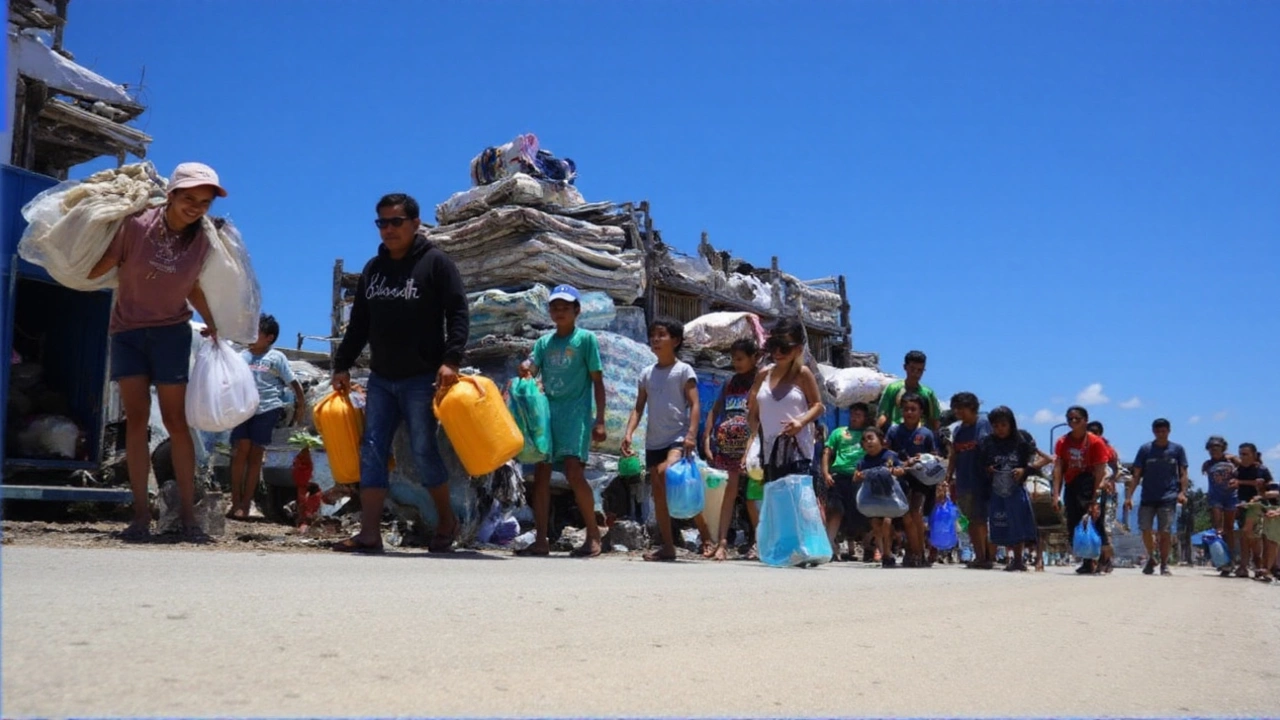Super Typhoon Ragasa Forces Evacuations in Philippines, Threatens Hong Kong

When a storm reaches the ferocity of a Category 5 hurricane, everyone from farmers to city planners starts ticking boxes on emergency checklists. Super Typhoon Ragasa has done exactly that, turning calm coastal towns in the Philippines into a whirlwind of evacuation orders and makeshift shelters.
Why Ragasa is a Game‑Changer
Ragasa didn’t become a super typhoon overnight. Satellite images over the past 48 hours show a tropical disturbance that quickly gathered strength over warm Pacific waters, feeding off sea‑surface temperatures that were a full two degrees above average. Meteorologists at the Japan Meteorological Agency noted a rapid drop in central pressure, a classic sign that the storm was gearing up for major intensity.
What sets this system apart is its sustained wind speed: wind gusts have been clocked at 165 mph (266 km/h) in the eye wall, well beyond the 157 mph threshold that defines a Category 5 storm. Those speeds can rip roofs off houses, topple power lines, and fling debris like projectiles. Add to that the storm’s massive rain bands, which are dumping upwards of 300 mm of rain in just a few hours, and you have a recipe for flash floods and landslides.
Geographically, Ragasa’s path is especially concerning. After carving a destructive track through the central Philippines, the cyclone is now veering west‑northwest, aiming directly at Hong Kong’s densely packed shoreline. The city’s high‑rise districts sit just a few miles from the sea, meaning any storm surge could flood major transport hubs and residential blocks within minutes.
What Authorities Are Doing
In the Philippines, the National Disaster Risk Reduction and Management Council (NDRRMC) has declared a Level 4 (red) alert for the hardest‑hit provinces. Local officials have opened more than 40 evacuation centers, ranging from school gymnasiums to community halls, and are distributing emergency kits that include tarpaulins, bottled water, and non‑perishable food. “We’re moving people inland before the wind even arrives,” said Barangay captain Maria Santos, who is overseeing the evacuation of a coastal village of 2,300 residents.
Meanwhile, Taiwan’s Central Weather Bureau has raised its alert to the highest tier and issued a public warning that the island’s east coast could experience “life‑threatening” conditions. Though the typhoon is not projected to make landfall there, the peripheral rain bands are already causing localized flooding in mountainous regions.
Hong Kong’s Observatory has issued the "Typhoon Signal No. 10," the highest warning level, prompting a city‑wide shutdown of schools, government offices, and most public transport. The Transport Department has ordered all ferries and cross‑harbor services to cease operations, while the Police Force is deploying extra patrols to enforce curfew orders in low‑lying districts.
Emergency response teams across the region are also preparing for post‑storm clean‑up. In the Philippines, the Armed Forces are on standby to assist with debris removal and to restore power lines damaged by flying objects. In Hong Kong, the government’s “Emergency Response Framework” has activated reserve crews equipped with high‑capacity pumps to combat anticipated storm surge flooding.
Local residents are taking matters into their own hands, too. Social media groups are sharing real‑time updates on safe routes, available shelters, and supply distribution points. In one Manila neighborhood, volunteers have organized a “food convoy” to bring meals directly to the evacuation centers, ensuring no family goes hungry while they wait out the storm.
As Ragasa continues its westward march, the next 24 hours will be critical. Forecast models suggest a slight northward shift may spare Hong Kong the full brunt of the eye, but even a glancing blow could unleash several meters of storm surge along the coast. Authorities are urging everyone to stay indoors, keep emergency kits handy, and follow official advisories without delay.
